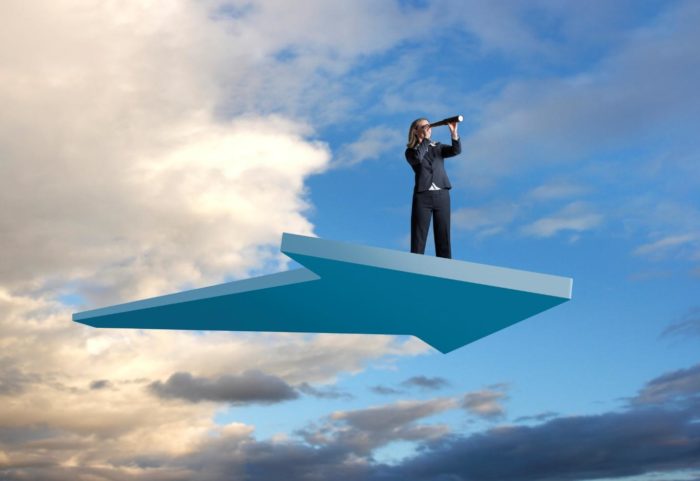Looking Forward

Will the economy recover? Will the economy grow?
Now that the stimulus package has been approved and stimulus checks are either in the mail or in the bank, all eyes are on the consumer .
Consumers, you and me, account for 70% of economic growth in the U.S.
Growth is all about what we spend money on and that is the interesting part. The part economists are trying to figure out.
Not everything we spend money on counts toward growth.
Some of the things that are left out of the growth calculation are:
- Buying a used car. The car was counted when it was new.
- Paying off credit card debt. Whatever you used the credit card for has already been counted.
- Buying something online from a company outside the U.S.. It counts towards the GDP of the other country,
- Savings. That’s right. Saving is a great habit to have. When savings are invested or kept in cash, savings do not count as consumption.
- Going to a Vintage Clothing store or swap meet. Those things were new and counted once upon a time ago.
For the economy to recover and grow , consumers and consumption is the key.
Looking at a GDP “number” isn’t very informative. We know that 6% is better than 5% but what stage of the economy are we in ? Are we growing?
If economists say the economy is strong and GDP is 5% , remember the story of Goldilocks and the Three Bears.
GDP above 5% is too hot , GDP below 5% is too cold and GDP at 5% is just about right.
During the 1990’s the economy was often referred to as a “Goldilocks Economy”.
GDP in 2020 was not hot as you can imagine. GDP was frozen solid. The GDP thermometer was negative 3.5%.
“GDP for 2020 Real GDP decreased 3.5 percent in 2020 (from the 2019 annual level to the 2020 annual level), compared with an increase of 2.2 percent in 2019 (table 1).”
Growth in the economy is measured through data collection. Massive amounts of data collected by the Commerce Department to tell us our current growth rate.
The data is rolled up into economic indicators like Gross Domestic Product (GDP).
GDP is the indicator that will give us an idea if the stimulus is working.
But there is always a but:
Gross Domestic Product , like every indicator, is backward looking. It tells you what has happened, not what is going to happen.
Market participants and investors want to know what is going to happen because it impacts investment decisions.
If the economy is improving, what sectors should you invest in? Are there sectors you should avoid?
What GDP gives you is a sense of direction. Not a clear answer. How can you use an economic indicator like GDP to guide you with investment decisions?
Let’s break it down.
GDP is all about who spends what on what.
For the purposes of GDP, consumer spending has three broad categories:
Durable Goods
These are things you buy that you expect to last a long time, 3 years or more. Cars , refrigerators, and furniture are examples. Have you been saving up for an expensive item? Durable Goods are known as “big ticket” items.
During a recession durable goods are purchases that we postpone.
Non-Durable Goods
Non-durable goods are things like beverages, food, household products and personal products.
I could make the case that I have some makeup that is more than 3 years old and looks like it could last forever, but it would not fall into the durable goods category. Producers of makeup expect you to throw it away every 6 months. Ha! Who does that?
Services
Think about anyone who works in a customer/client service role. Healthcare, Arts, Entertainment, Education, Financial Services, Hotels and Food Services, Utilities and Transportation. Restaurants and bars. Attorneys and acrobats. Salons for people and pets.
Who has been impacted the most during the pandemic? Workers in the service sector.
It is easy to see why the economy failed so quickly. The largest component of the economy, anyway you count it , is the service sector.
Calculating GDP | Macroeconomics (lumenlearning.com)
As an investor, if you believe the economy is on the road to recovery you might look at companies or sectors that stand to benefit the most.
For example : Travel and Leisure . More cruise lines came to a dead halt in 2020 than the cargo ships stuck in the Suez Canal.
I don’t have to love cruises to know there are plenty of people who can’t wait to get back on a cruise ship.
Stayed away from doctors and hospitals? Good idea given we were told to. Doctors and nurses and healthcare professionals are all part of the service sector.
Zooming with your attorney? Attorneys are included in the service sector although with the courts largely closed I heard attorneys have been very busy with cases backing up.
The collective “we” in the economy spend more money on services than durable or non-durable goods combined.
Full disclosure, I do not have an account with Fidelity, but I am impressed with how much information you can get for free. The link below takes you to an interactive chart showing each sector of the economy, and how well each sector is doing.
Sectors & Industries Overview – U.S. Sectors- Fidelity
Time to look forward !
 |
This website is for informational purposes only and does not constitute an offer to sell, a solicitation to buy, or a recommendation for any security, nor does it constitute an offer to provide investment advisory or other services by The Modest Economist LLC.
